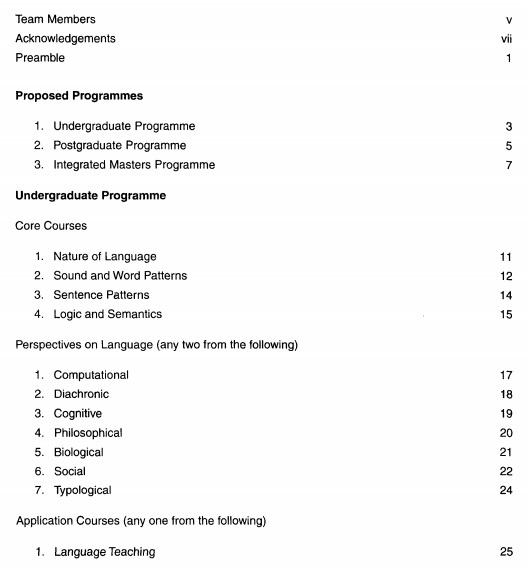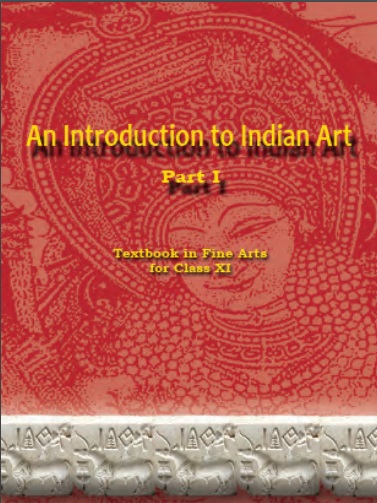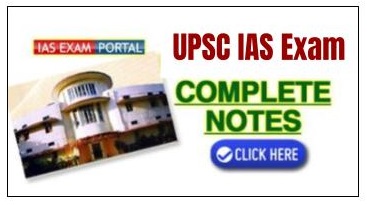
संघ लोक सेवा आयोग सिविल सेवा - मुख्य परीक्षा
(Download) UPSC IAS Mains Exam Paper - 2017 : वनस्पति-विज्ञान (Paper - 1)
वनस्पति-विज्ञान
(प्रश्न पत्र - I)
निर्धारित समय : तीन घंटे
अधिकतम अंक : 250
प्रश्न-पत्र सम्बन्धी विशेष अनुदेश
कृपया प्रश्नों के उत्तर देने से पूर्व निम्नलिखित प्रत्येक अनुदेश को ध्यानपूर्वक पढ़े :
इसमें आठ (8) प्रश्न हैं जो दो खण्डों में विभाजित हैं तथा हिन्दी और अंग्रेज़ी दोनों में छपे हैं ।
परीक्षार्थी को कुल पाँच प्रश्नों के उत्तर देने हैं।
प्रश्न संख्या 1 और 5 अनिवार्य हैं तथा बाकी में प्रत्येक खण्ड से कम-से-कम एक प्रश्न चुनकर किन्हीं तीन प्रश्नों के उत्तर दीजिए । प्रत्येक प्रश्न/भाग के अंक उसके सामने दिए गए हैं ।
प्रश्नों के उत्तर उसी प्राधिकृत माध्यम में लिखे जाने चाहिए जिसका उल्लेख आपके प्रवेश-पत्र में किया गया है, और इस माध्यम का स्पष्ट उल्लेख प्रश्न-सह-उत्तर (क्यू.सी.ए.) पुस्तिका के मुख-पृष्ठ पर निर्दिष्ट स्थान पर किया जाना चाहिए । प्राधिकृत माध्यम के अतिरिक्त अन्य किसी माध्यम में लिखे गए उत्तर पर कोई अंक नहीं मिलेंगे।
प्रश्नों में शब्द सीमा, जहाँ विनिर्दिष्ट है, का अनुसरण किया जाना चाहिए ।
जहाँ आवश्यक हो, आरेख / चित्र उत्तर के लिए दिए गए स्थान में ही दर्शाइए ।
प्रश्नों के उत्तरों की गणना क्रमानुसार की जाएगी । यदि काटा नहीं हो, तो प्रश्न के उत्तर की गणना की जाएगी चाहे वह उत्तर अंशतः दिया गया हो । प्रश्न-सह-उत्तर पुस्तिका में खाली छोड़ा हुआ पृष्ठ या उसके अंश को स्पष्ट रूप से काटा जाना चाहिए ।
खण्ड A
Q1. निम्नलिखित प्रत्येक का लगभग 150 शब्दों में वर्णन कीजिए :
(a) कवकों में परालैंगिकता
(b) फाइकोबिलिप्रोटीन
(c) चतुर्भुवीय विषमथैलसता
(d) लाइकेनों के प्रमुख लक्षण
(e) परिमुख (पेरिस्टोम)
Q2. (a) प्रतिरूपण (मॉडलिंग) से क्या अभिप्राय है तथा यह रोग के पूर्वानुमान में कैसे सहायक है ?
(b) पॉलीसाइफोनिया के अधि-द्विगुणित जीवन चक्र का वर्णन कीजिए ।
(c) नीटम के बीजांड के अनुदैर्व्य-काट (एल.एस.) का सुनामांकित रेखाचित्र बनाइए और साथ ही इसके स्त्री युग्मकोभिद का संक्षेप में वर्णन कीजिए ।
Q3. (a) क्रूसिफेरों के श्वेत किट्ट (व्हाइट रस्ट) एवं गन्ने के लाल विगलन रोग के लक्षणों, रोगकारी जीवों तथा नियंत्रण के उपायों का वर्णन कीजिए।
(b) ब्रायोफाइटा के हेपेटिकोप्सिडा, ऐन्थोसिरोटोप्सिडा तथा ब्रायोप्सिडा संवर्गों के बीच केवल बीजाणु-उभिदों के विशेष संदर्भ में तुलना कीजिए ।
(c) भारत में जीवित अनावृतबीजियों (जिम्नोस्पर्ल्स) के वितरण का लेखा प्रस्तुत कीजिए।
Q4. (a) जीवाणुओं में आनुवंशिक पुनर्योजन का लेखा प्रस्तुत कीजिए ।
(b) टेरिडोफाइटा में स्टेलर तंत्र के उविकास का उचित आरेखों के साथ वर्णन कीजिए ।
(c) पादप विषाणुओं के संचारण की विभिन्न विधियों का लेखा प्रस्तुत कीजिए ।
खण्ड B
Q5. निम्नलिखित प्रत्येक का लगभग 150 शब्दों में वर्णन कीजिए :
(a) भ्रूणविज्ञान का वर्गिकी से सम्बन्ध, उदाहरणों सहित
(b) पादपों में वैवीलोव के उद्गम केन्द्र
(c) संरचनाविकास के संबंध में पादपों में सममिति
(d) अंतर्राष्ट्रीय वानस्पतिक नामपद्धति कोड
(e) पुमंग जनित (ऐण्ड्रोजेनिक) अगुणित पादप
Q6. (a) पुष्पीय पादपों में बहुभ्रूणता एवं असंगजनन पर टिप्पणी कीजिए।
(b) आधुनिक औषध खोज के संबंध में मानवजाति-वनस्पति विज्ञान (ईथनोबॉटनी) का लेखा प्रस्तुत कीजिए ।
(c) पुष्प-कृषि में क्लोनी सूक्ष्मप्रवर्धन लाभदायक है ।” कुछ उपयुक्त उदाहरणों द्वारा इस प्रक्रम की व्याख्या कीजिए।
Q7. (a) ऐंगलर तथा पैंटल द्वारा दिए गए वर्गीकरण का वर्णन कीजिए. और साथ ही इसके गुणों एवं दोषों पर टिप्पणी कीजिए।
(b) निम्नलिखित का लेखा प्रस्तुत कीजिए :
(i) अंतराज़ाइलमी फ्लोएम के परिवर्धन का विवरण ।
(ii) डैसीना के तने में असंगत द्वितीयक वृद्धि
(c) सोमाक्लोनी विभिन्नताओं की व्याख्या कीजिए और पादप प्रजनन में उनके अनुप्रयोग बताइए ।
Q8. (a) निम्नलिखित कुलों के संदर्भ में पुष्प-आरेख एवं पुष्प सूत्र का ब्यौरा दीजिए । प्रत्येक कुल से चार महत्त्वपूर्ण पादप प्रजातियों के वानस्पतिक नामों के साथ उनकी उपयोगिता बताइए :
(i) कुकुरबिटेसी
(ii) सोलैनेसी
(iii) लिलिएसी
(b) रेशा, रंजक एवं रेज़िन के स्रोतों की भाँति प्रयुक्त किए जाने वाले पादपों का उपयुक्त उदाहरणों सहित वर्णन कीजिए ।
(c) निम्नलिखित पर संक्षिप्त टिप्पणियाँ लिखिए :
(i) कोशिकाद्रव्यी संकर
(ii) रसोवर्गिकी (कीमोटेक्सोनॉमी)

NEW! UPSC, IAS परीक्षा संपूर्ण अध्ययन सामग्री (प्रारंभिक, मुख्य, साक्षात्कार COMBO) - Hindi Medium







